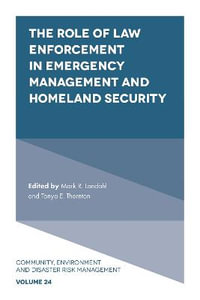This book analyzes the "newest terrorism" that has emerged in recent years - characterized by increased hostage-taking, kidnapping, and active violence - and develops best practices for countering the newest terrorism. How should we analyze and assess new terrorist behaviors? What are the particular risks and challenges from new terrorism? Should we negotiate with terrorists? How should we negotiate with terrorists procedurally? When should we use force against terrorists? These are some of the questions answered in Countering New(est) Terrorism: Hostage-Taking, Kidnapping, and Active Violence--Assessing, Negotiating, and Assaulting Terrorist hostage-takings, kidnappings, and active attacks are growing in frequency and deadliness. These activities are used by terrorists as means to other ends--including, unfortunately, to lengthen publicity before mass killings. The new terrorists are dramatically more ideological, murderous, and suicidal. They are generally less reconcilable, less trusting of official negotiators, less likely to release detainees, and more likely to kill detainees. They are less likely to demand ransoms yet more likely to release hostages in cases in which they do demand ransom. They are more informed about the official side's policies, tactics, techniques, and procedures. They are more likely to use new information and communication technologies against responding agencies and officials. They are more capable fighters--they kill more people even though they deploy fewer fighters per hostage. Perhaps most disturbing is the fact that they make use of free-er societies to access easier targets, while holding more complex interpretations of legitimate targets and legitimate handling of hostages. This book seeks to improve our knowledge of new terrorist behaviors, and our skills in responding to new terrorist behaviors. Along the way, it will challenge fashionable wishful thinking that all terrorists are open to rational negotiation or de-radicalization, and that military responses always reflect badly on the official side, and that terrorists are not constrained by their own doctrines. Wholly new, original data and theories are derived from reviews of the latest theories and practices, a new extension of the Global Terrorism Database, qualitative exploration of key cases, an unprecedented review of the doctrines issued by new terrorists themselves, interviews with experienced officials, and real-world simulations. Features: Evidence-based definitions and descriptions of terrorism--including political terrorism, religious terrorism, Jihadi terrorism, and new terrorism The first largen-n comparison of old and new terrorism, using an original extension of the Global Terrorism Database (GTD). A further extension of the GTD covering all 80,676 terrorist events from 2004 through 2015 and roughly 5 million data points. Useful, practical, effective prescriptions for responding to the newest terrorism Advice on how to assess terrorist the risks of the newest terrorism Advice on how to negotiate crises Advice on when and how to assault terrorists Visual representation of prescribed procedures Reviews of official practices, interviews with experienced officials, and real-world simulations of the latest terrorist crises help to integrate knowledge while dispelling commonly held myths New theories and action plans for future events based on reviews of current theories and practices and data-driven analyses of terrorist motivations, doctrines, and behaviors Countering New(est) Terrorism will be of interest to terrorism researchers, students in terrorism and Homeland Security programs, crisis negotiators, and police, security intelligence, and military authorities tasked with counterterrorism, and anti-terrorism efforts.
























